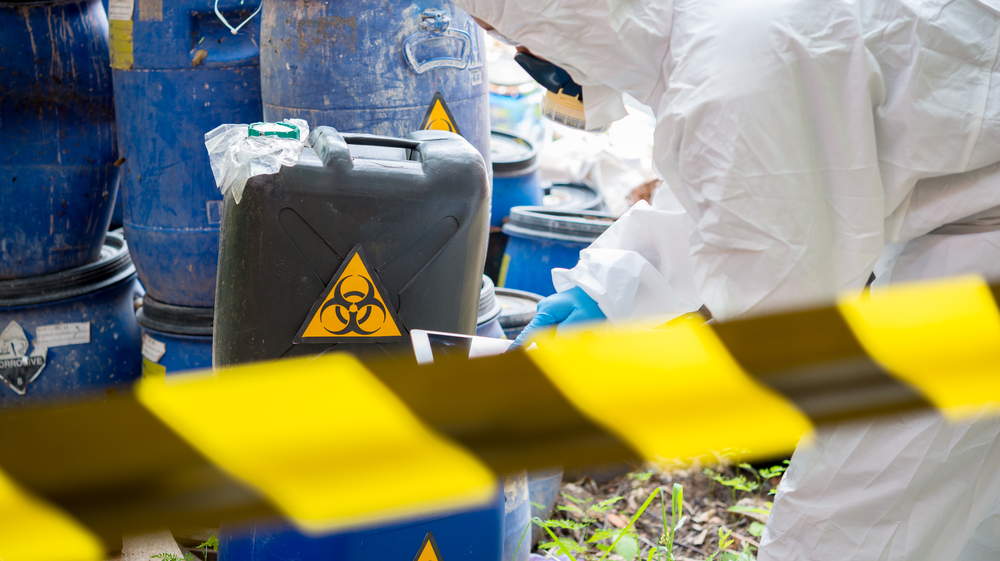
It would cost the U.S. government only half a day’s worth of federal spending — anywhere between $5 billion and $6 billion — to create the infrastructure needed to counteract the threat of chemical or biological attacks, according to findings described in “Invisible Scourge: The Danger of Chemical or Biological Attack on America is Growing Fast.”
The 15-page document was recently released by the Lexington Institute, a non-profit think tank based in Arlington, Virginia.
The report made both recommendations and issued warnings, such as:
- The United States should have a coordinating mechanism by which new technologies can be developed and deployed in a timely fashion in the threat of a bio-chem attack;
- Recent advances in the life sciences enable researchers and layman to fashion lethal pathogens in- and outside of laboratories;
- And open-access scientific publications have published blueprints on to how to synthesize a virus like smallpox for anyone to read.
“Unlimited access to genetic engineering technology is like unlimited access to guns,” said Loren Thompson, the report’s author and the Institute’s chief operating officer. “In a handful of cases, it will produce catastrophes.”
Specifically, Thompson mentions the publication of research results earlier this year by a University of Alberta team in the journal, PLOS. In the article, the scientists outlined how they assembled horsepox, a cousin to smallpox, from pieces of DNA received by mail, then infected and reproduced it. The publication faced much criticism in the scientific community and beyond because it showed anyone with an Internet connection how to replicate the process. The primary concern was this knowledge could be applied to the creation of smallpox for use as a bioweapon. Smallpox, which is easily transmissible, killed more than 300 million people worldwide in the 20th century alone.
Along the same lines, Thompson points to the potential use of the new gene-editing tool known by its acronym CRISPR. He writes that a scientist “sympathetic to extremist causes” could edit a genome with CRISPR to create an organism “combining the lethality and transmissibility of multiple pathogens.”
However, limiting advances in science may not always be a best option. Increasing coordination and funding to better monitor the United States’ bio-chem resources can be reasonably achieved, Thompson writes. Yet, there have been roadblocks. The Blue Ribbon Study Panel on Biodefense warned in December 2016 that the U.S. biodefense system was fragmented and was woefully underprepared for severe biological incidents. They faulted the Obama administration for “failing to implement remedial steps” that the panel recommended to fix this fragmentation.
More recently, the Trump administration “downgraded the role of global health security on the National Security Council staff” and proposed closing both the Chemical Security Analysis Center and the National Biodefense Analysis and Countermeasures Center, facilities “established by Congress to serve as national focus points for research on the kinds of threats described in this report,” writes Thompson. These include 11 high-priority biological threats. Beyond those, others considered menacing are: botulism, Ebola hemorrhagic fever, Marburg hemorrhagic fever, pandemic influenza, plague, tularemia, and typhus.
Among chemical threats, the nerve agent Novichok is one of great concern. Novichok is a series of agents developed by the Russians that some say is the deadliest of nerve agents ever created. That chemical made the news earlier this month when British citizen Charlie Rowley and his girlfriend were both poisoned by the toxin. It was the second poisoning with the toxin this year in England, and the British government has accused Russia of involvement, accusations its leaders deny.
These incidents highlight the ease in which such chemicals can cross international borders, and Thompson says global business has also made the transport of toxins more likely. Precursors of chemicals to make nerve agents are synthesized at thousands of places worldwide to make other common products, such as nylon.
Despite these concerns, Thompson argues that the U.S. government could bolster programs already in place, such as the Public Health Emergency Medical Countermeasures Enterprise managed by the U.S. Department of Health and Human Services’ Office of the Assistant Secretary for Preparedness and Response. Thompson writes that it is the “closest thing Washington has to an inter-agency coordinating mechanism for addressing chemical and biological threats,” especially as they have done an efficient job at stockpiling vaccines and other therapies, as well as putting in place a network that can reach victims of an attack. However, the Strategic National Stockpile, which the Countermeasures Enterprise manages, relies heavily on state and local authorities and only receives one hour of federal spending annually.
In addition, Thompson states that the United States has promising technologies, such as one built by Battelle to address a bio-chem threat. The tool, the Resource Effective Bioidentification System or REBS, is a single-box solution that “dramatically simplifies the task of detecting and classifying threats” and costs less than 1 percent of what other approaches would when applied in the field.
Thompson says the report has circulated among White House officials. His organization plans to revisit the issue of bio-chem threats.
“The danger is so great and the cost of addressing is so low,” Thompson said.




